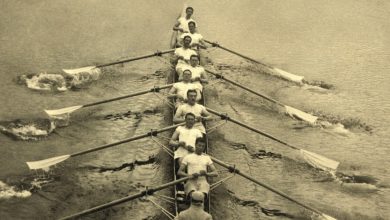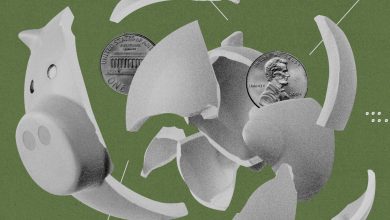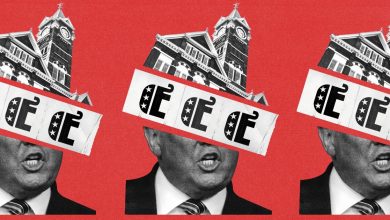A California Bill Might (Again) Allow Athletes to Profit. This Time, the Colleges Would Be Paying.

[ad_1]
When Chris Holden enrolled at San Diego State University, being a student wasn’t easy. That’s because he was on the basketball team, and since his scholarship was tied to his performance on the court, his athletic obligations often superseded his classes and any hope for leisure time. Workouts, classes, more workouts, and homework set the cadence of his days, not to mention travel to away games.
“You have to work harder,” Holden said. “You have to study on airplanes; you have to study in lobbies.”
Decades later, Holden was elected as a Democrat to California’s state legislature. He brought with him his experience as an athlete and a belief that college players, who devote most of their lives to sports, should be paid directly for their efforts.
In January, Holden introduced a bill that would do just that — while possibly shaking the foundation of higher education and athletics as a result.
The College Athlete Protection Act would require colleges to provide some compensation to athletes in more lucrative sports — predominantly football and men’s basketball.
The bill passed through the California State Assembly’s higher-education committee last week and will now move to the appropriations committee, which Holden himself chairs. It’s expected to move further than a similar proposal that appeared last year.
“When you see how much the universities are making in revenue, coaches are making in revenue, the media outlets are making in revenue, the student-athlete is the one that is not included in that equation,” Holden said. College athletes, he said, “are performing, and they need to be compensated for that.”
While Holden’s bill would only affect colleges that participate in Division 1 sports in California, similar legislation has shaken up athletics nationwide before. In 2019, California passed a law that effectively allowed athletes to earn money from their names, images, and likenesses, or NIL — contradicting longstanding NCAA rules. After a flood of other states followed suit, the association was forced to capitulate, though it still forbids direct compensation. Meanwhile, the Supreme Court signaled in a case about educational benefits that it was skeptical of the NCAA’s position on compensation.
Now, the California bill and other developments suggest that a future of direct compensation may not be far off. College officials across the country are reluctant to talk publicly about how they’re preparing for that possibility. Several athletic directors did not respond to The Chronicle’s requests for comment.
“It creates a lot of turmoil and uncertainty from just a day-to-day operational perspective, but also from a strategic perspective, for what will the future of college athletics look like?” said Linda A. Livingstone, president of Baylor University and chair of the NCAA’s Board of Governors, in an interview.
Such a future would introduce plenty of technical problems. If colleges have to start paying players out of team revenues, experts said, officials will have to figure out how to redistribute athletic budgets. If athletes are granted employee status, colleges will have to navigate a new employer-employee relationship with athletes and all its accompanying legal implications.
‘Not Above the Law’
The NCAA has long avoided paying its workers a fair market rate, several sports-law experts said, by claiming their product is defined by the fact that their players don’t get paid.
For years, the NCAA has argued that college sports would lose its audience if pay for athletes entered the picture. But B. David Ridpath, a professor of sports business at Ohio University, said that has been proven false. This past year, as athletes have been able to sign contracts with sponsors under the new NIL parameters, the college-sports landscape has changed dramatically, but Ridpath said it hasn’t had a negative impact on viewership.
“We’re going that direction, and you know what? People don’t care,” Ridpath said. “We’re still watching the games.”
But the NIL landscape, in which “collectives” have sprung up to funnel payments directly to players with ostensible non-involvement from colleges, may not be the status quo for long.
The Third Circuit Court of Appeals is considering Johnson v. NCAA, in which former college athletes argue that they should be entitled to workers’ rights, like minimum wage, overtime, and collective bargaining. And the National Labor Relations Board’s general counsel issued a memo in 2021 endorsing the legal position that certain college athletes should be treated as employees.
These developments have given the unmistakable sense that direct compensation may be on the horizon. Livingstone, Baylor’s president, said it’s important for colleges to do “scenario planning” in moments of uncertainty. “What are the different paths that athletics and athletic programs might go down?” she asked. “And how do we begin to anticipate and try to get ahead of that?”
When you see how much the universities are making in revenue, coaches are making in revenue, the media outlets are making in revenue, the student-athlete is the one that is not included in that equation.
Livingstone said that in conversations with other college presidents, she’s heard concern about how to keep an emphasis on academics as athletics change.
“College presidents care a lot about the student-athletes getting degrees and graduating, and so they worry about anything in the model that makes that harder and harder for student-athletes to do or takes it away from being as much of a priority in the process for student-athletes,” Livingstone said.
If the floodgates open, allowing colleges to pay athletes, Ridpath said, many colleges will likely do so due to pressure to attract top-notch prospects.
Livingstone said she’s open to the college sports model evolving from how it has looked historically, and that it may look different in 10 years than it does today. But she thinks it’s important to focus on academics.
“How do we benefit student-athletes over the long run in ways that recognize the value of what they’re bringing to our institutions and ensure that there is still a focus on them being a student first? That is a priority,” Livingstone said, arguing that recognizing college athletes as employees could diminish their status as students. “That’s why employment models can be challenging.”
Up to $25,000 a Year
The California proposal would not define athletes as employees, even though it would provide compensation under the label of “rights, benefits, and protections.”
Here’s how it would work: Each year, athletic programs in which the value of all disbursed athletic scholarships make up less than 50 percent of the team’s revenue would be subject to the rules. On those teams, the difference between 50 percent of the team’s revenue and the value of all athletic scholarships would be divided equally among all scholarship recipients.
Those distributions could total well over $100,000. Sportico reported earlier this year that, based on 2019 data, men’s basketball players at the University of California at Los Angeles could be entitled to a whopping $389,000. But they wouldn’t see it all at once, as the bill caps annual payments at $25,000 per academic year. The remaining balance would be set aside until athletes graduate; if they don’t within six years, they forfeit the money.
The bill gives colleges another potentially cheaper route to comply with the law: The athletic department could take whatever revenue it earned in excess of the 2021-22 academic year, and then divvy it up among the relevant teams however it wants, so long as each member of a given team is paid the same amount. And if athletic departments bring in the same or less revenue than they did in 2021-22, they don’t have to pay athletes a cent.
Holden said he’s optimistic about the bill’s prospects as it enters the appropriations committee. “I’m the chair of appropriations, so pretty confident that it’ll keep moving,” he said. “But we’re going to obviously address some of the additional concerns that were laid out there by the opponents.”
In a statement on Tuesday to USA Today, the NCAA’s new senior vice president for external affairs, Tim Buckley, said that the association opposes Holden’s bill and would prefer action from Congress to lead the way.
“The NCAA believes the California legislation is the wrong solution at the wrong time,” he said. “It will only further complicate an already-murky picture while we’re working with Congress to create a uniform playing field in this space.”
According to the California Committee on Higher Education, other registered opponents of the bill include the Association of Independent California Colleges and Universities, California State University’s Office of the Chancellor, Stanford University, the University of Southern California, Team USA Athletes’ Commission, the United States Olympic & Paralympic Committee, the University of California, USA Swimming, USA Track & Field, and USA Water Polo. Supporters include the California Labor Federation, AFL-CIO, and the National College Players Association.
One concern is centered on gender equity. In a letter to the chair of the California Assembly’s higher-education committee, Martha M. Escutia, special counsel and vice president for state government relations at the University of Southern California, wrote that football and men’s basketball are the only sports at USC that would fall within the bill’s revenue-sharing provisions. As a result, it would “lead to a drastic reduction in funding and services for other sports and/or university programs,” she wrote, adding that the proposed law “is premised on the deeply flawed notion that student-athletes participating in sports that generate significant revenue have more ‘value’ than those participating in sports that do not.”
But Holden said the bill provides a safety net for colleges that aren’t generating new revenue and would prevent them from needing to cut low revenue-generating teams.
“Nothing would force them to have to cut programs or to eliminate any programs that women’s sports are connected to,” Holden said.
Concerns about compliance with the gender-equity law, known as Title IX, are a common criticism of the movement to compensate college athletes. In an April hearing before the U.S. House of Representatives Committee on Energy and Commerce, Kaley Mudge, a student and softball player at Florida State University, said she was concerned that an “employee-employer model” would diminish resources for teams like hers, which don’t generate the revenue that football and men’s basketball do.
“Benefits enjoyed by student-athletes across the country would not be possible without legal protections under Title IX and the redistribution of revenue across all sponsored sports,” Mudge said in her testimony. “The creation of an employee-employer model would significantly threaten this current dynamic and alter everything we know about how sports outside of football and men’s basketball are supported.”
But Ellen Staurowsky, a sports-media professor at Ithaca College, said revenue in college athletics already isn’t distributed evenly. “The idea that somehow by denying athletes the opportunity to have employee status, to be compensated fairly, would somehow derail Title IX compliance, when it doesn’t exist, I think is really disingenuous,” Staurowsky said.
Ridpath said that since Title IX was enacted, college spending on football and men’s basketball increased drastically.
“It’s just an excuse and rhetoric,” Ridpath said. “The money is there. It’s your choice of how you want to spend it.”
Sarah Brown contributed reporting.
[ad_2]
Source link






